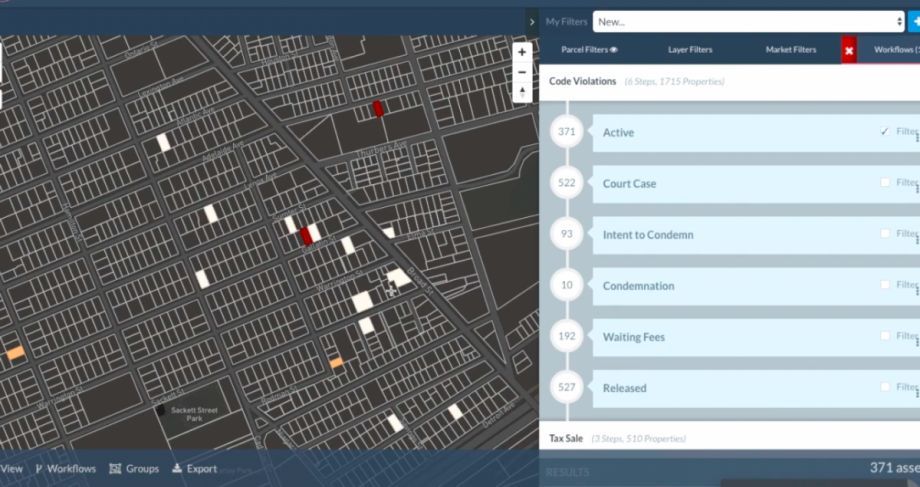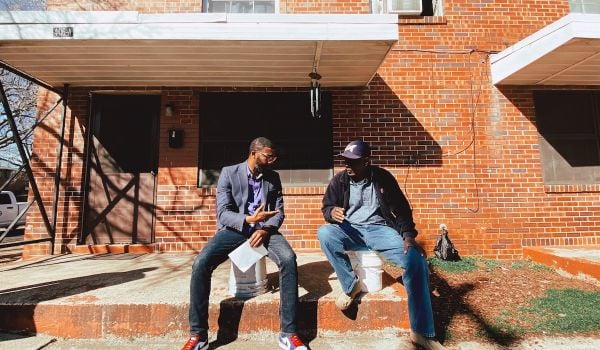It’s a nightmare scenario familiar to many mayors and city council members across the United States: A duplex property, vacant for years, with tax liens and back utility bills piled up, multiple building code violations issued. The last known owner-occupant bought the property, let’s say in 2006, with a subprime mortgage, and walked away from the mortgage years ago. The local government forecloses on the property, puts it up for auction at a sheriff’s sale in the middle of the recession, and it gets picked up on the cheap by some real estate investor based far away. The new landlord rents it out, but seeing as they don’t live in the community they’re not concerned with screening out potential problem tenants. So when someone calls up and says they’ll pay two months rent and a deposit, in cash, up front, they say why not.
Meanwhile, a couple houses down, a new family has just moved into their first home, rehabilitated with the assistance of local and state tax dollars, purchased with the assistance of federally funded first-time homebuyer counseling and a federally subsidized mortgage. Soon, happy as they might be to have a home, they’ll be making weekly calls to police about the problem renter down the street. Maybe they’ll see on the news one night that someone overdosed on opioids in the problem house.
The city could have targeted the first foreclosed home with community development resources and put it back into service through the first-time homebuyer programs. But it didn’t, because the department of finance uses one filing system to track tax liens, the utilities providers use another, the building code enforcement uses another, the housing authority uses another, and the police department uses another. The data needed to target resources more strategically is already out there, but there’s no way to line up everything all in one place to find properties most likely to fall into the duplex situation above and perhaps divert them into rehabilitation and community development programs.
In a request for applications (RFA) sent to municipalities last week, the Office of New York State Attorney General Eric Schneiderman promises to equip municipal leadership in his state with a new tool that will do just that: reconcile databases of all kinds, from Microsoft Excel spreadsheets to ancient IBM AS/400 database systems. Up to 40 municipalities with a minimum population of 25,000 will be part of the program, which is funded using settlement dollars recovered by the attorney general’s office.
The program is, in part, meant to help guide and protect the $13 million in grants issued by the attorney general last fall to help cities and counties deal with zombie properties. “With the support of these resources,” says the RFA, “municipalities can create a blueprint for strategic and equitable allocation of code enforcement, housing improvement, and community development resources.”
The database tool in the program is known as BuildingBlocks, from Boston-based OpportunitySpace, Inc (whose earlier work was covered on Next City). A demo video showcases the tool’s interface. It uses an algorithm to draw out information from different data sources and organize it by address, making it all accessible in one place for every property in the municipality.
Municipalities have been requesting help from the attorney general’s office to track down problem landlords and problem properties. In addition to weighing down property tax rolls and public safety resources, evidence is piling up that shows how blighted properties cost neighbors too.
And yet, merely cracking down on code enforcement can be a risky proposition for cities worried about racial equity and discrimination. In a 2010 case later dismissed at the Supreme Court level, federal appeals court judges ruled that the city of St. Paul’s code enforcement crackdown inadvertently, but disproportionately, harmed black families. Cities may end up cracking down on code enforcement in minority neighborhoods, even though in the current opioid epidemic, whites represent 82 percent of overdose deaths. With better data coordination, cities could instead follow opioid activity to properties with building code violations and crack down on those landlords first.
The settlement dollars will pay for end-user agreements for the rights to use the tool, as well as technical assistance for implementation from either Enterprise Community Partners or the Local Initiatives Support Corporation, for the period of June 2017 to June 2019.

Oscar is Next City's senior economic justice correspondent. He previously served as Next City’s editor from 2018-2019, and was a Next City Equitable Cities Fellow from 2015-2016. Since 2011, Oscar has covered community development finance, community banking, impact investing, economic development, housing and more for media outlets such as Shelterforce, B Magazine, Impact Alpha and Fast Company.
Follow Oscar .(JavaScript must be enabled to view this email address)









